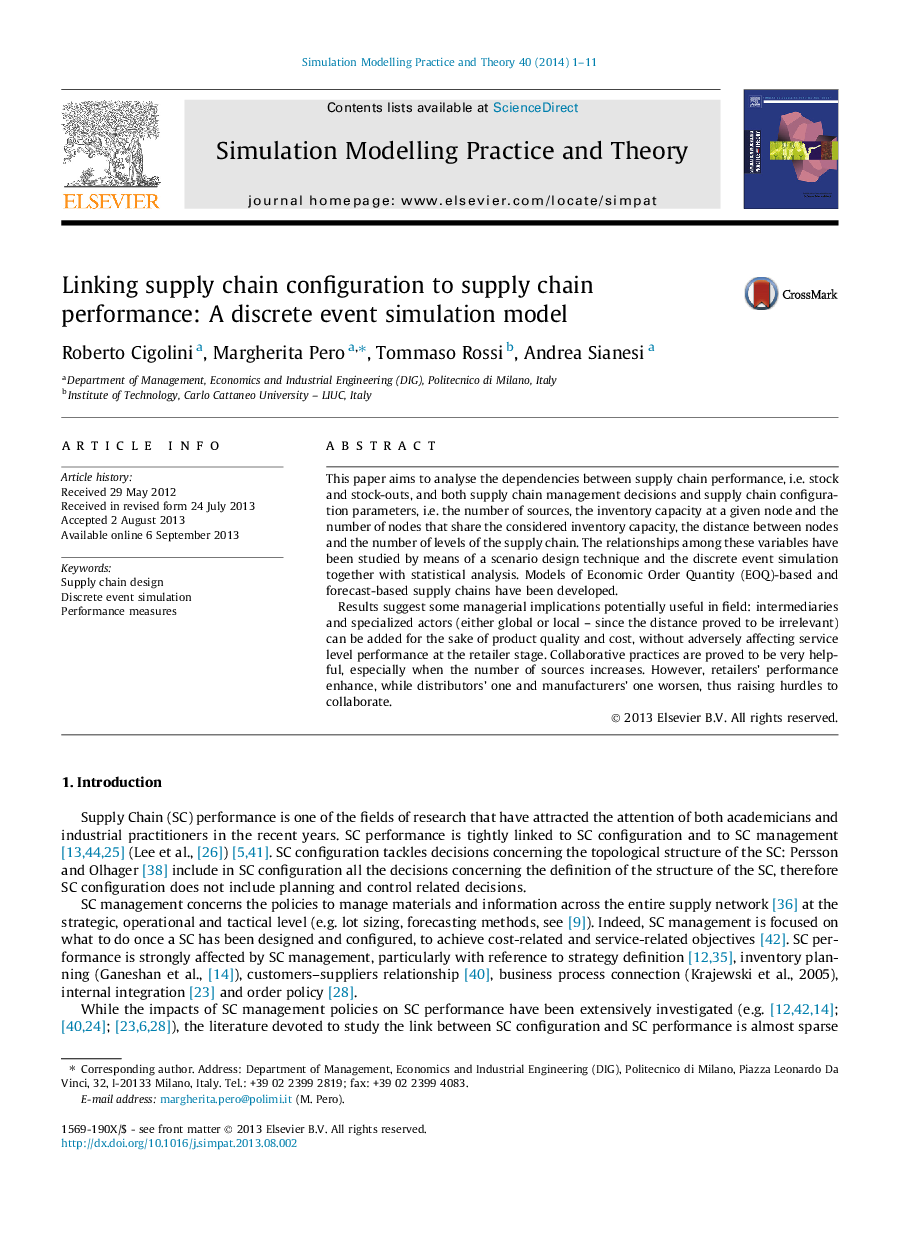| Article ID | Journal | Published Year | Pages | File Type |
|---|---|---|---|---|
| 492186 | Simulation Modelling Practice and Theory | 2014 | 11 Pages |
•We studied how SC configuration (e.g. layers) determines SC performance (service).•Long SCs do not affect retailers’ service level, but they require significant stocks.•Increasing number of suppliers deteriorates distributors’ and manufacturers’ performance.•Collaboration (information sharing, reserved capacity) is useful to reduce variance.•Splitting capacity among many retailers leads to high stock-outs along the SC.
This paper aims to analyse the dependencies between supply chain performance, i.e. stock and stock-outs, and both supply chain management decisions and supply chain configuration parameters, i.e. the number of sources, the inventory capacity at a given node and the number of nodes that share the considered inventory capacity, the distance between nodes and the number of levels of the supply chain. The relationships among these variables have been studied by means of a scenario design technique and the discrete event simulation together with statistical analysis. Models of Economic Order Quantity (EOQ)-based and forecast-based supply chains have been developed.Results suggest some managerial implications potentially useful in field: intermediaries and specialized actors (either global or local – since the distance proved to be irrelevant) can be added for the sake of product quality and cost, without adversely affecting service level performance at the retailer stage. Collaborative practices are proved to be very helpful, especially when the number of sources increases. However, retailers’ performance enhance, while distributors’ one and manufacturers’ one worsen, thus raising hurdles to collaborate.
